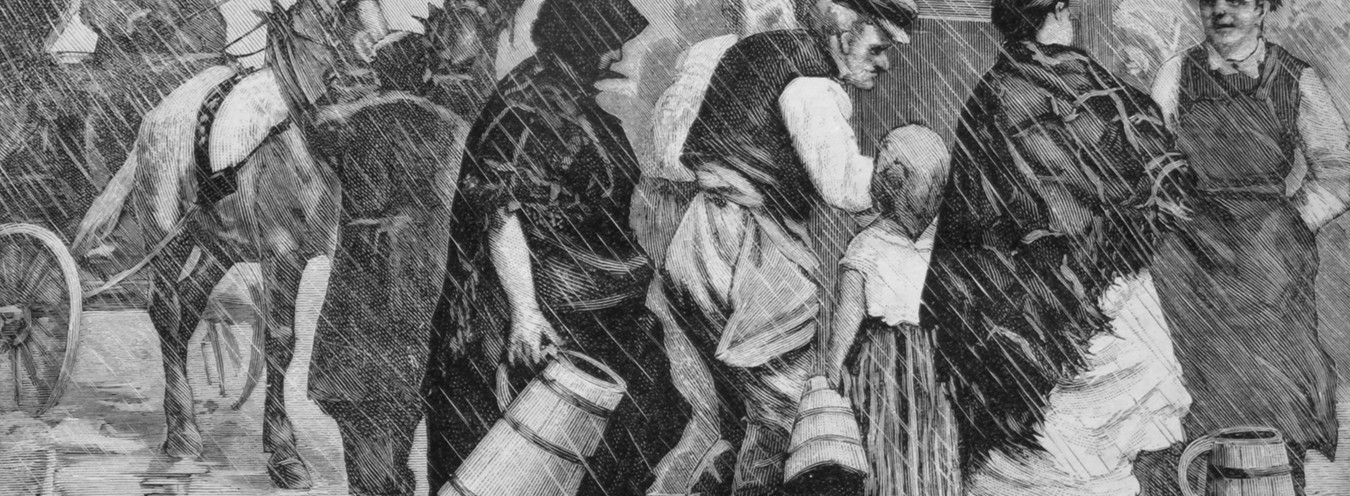
Personal Hygiene
[Rzecki] would jump out of bed, rapidly hop into the centre of the room and, after tossing his nightcap on the bed, run to the big wash-basin by the stove, and wash from tip to toe. (5)
The basic personal hygiene of Rzecki and Wokulski includes having a quick morning or evening bath in cool water, shaving, barbering and dressing hair with pomade. Ladies pay most attention to fashionable hairdos and make-up. For convenience, they take care of these beauty needs while sitting at dressing tables equipped with mirrors and decorated with muslin. Izabela Łęcka, in particular, is known to spend a long time in this way.
So says the novel. But in real-life Warsaw of the period covered in The Doll, apartments fitted with copper or tin bathtubs were nothing if not scarce. People usually washed themselves in large tin basins, fetched into bedrooms or kitchens (it was only in 1880 that bathrooms started to be introduced, and that in a limited number of apartments). Medium-temperature water was used for bathing, as it was believed to clean human skin in a most effective way: cold water was thought to energise instead of washing the body, hot water – to awaken carnal desires. An effectual bath meant a quick wash with a piece of hard or yellow soap, acompanied by a vigorous rubbing. The poor used lye (made of wood ash and hot water) for cleaning both their bodies and clothes. Hair washing was commonly avoided: it was thought to cause migraines and toothaches. Instead, hair was treated with rice powder or bran to remove grease. Teeth were brushed with soap, salt, or a special expensive finely-ground chalk powder which gave Izabela her beautiful pearly whites.
Everyday hygiene activities were performed by either a small washing table, covered with a cloth and hidden behind a screen in a bedroom, or a decorative vanity cabinet with a marble top and rails. The top could hold a set of porcelain, tin, copper, or faience bathing utensils: a bowl, a water jug, a toothbrush mug, soap and sponge dishes. Inside, there was usually a bucket or a ceramic lidded container for dirty water; in addition, one could find there a chamber pot (also known as urinal and thunder mug), made of porcelain or faience with a flowery pattern.
Superstitions about water and washing were still widely upheld. Rooms were almost never aired to prevent draughts, which were feared to cause many diseases. Pregnant women were discouraged from taking baths because water was believed to permeate human skin, dilate tissues and overstimulate fetal growth. Water was also said to weaken and relax the body, depriving the skin of elasticity. Moreover, hot baths allegedly made one anxious, lustful, or even licentious – an effect of seeing and touching the naked body. That is why people took baths in chemises, and private parts were never dried with towels. Yet another popular dread was of germs developing in washing bowls and water-filled bathtubs.
→ Sewers and Sewerage System; → Accommodation;
Bibliografia
- G. Vigarello, Czystość i brud: higiena ciała od średniowiecza do XX wieku [Concepts of Cleanliness: Changing Attitudes in France since the Middle Ages], trans. B. Szwarcman-Czarnota, Warsaw 1996.
- M. Sokołowska, Myć się czy wietrzyć? Dramatyczne dzieje higieny od starożytności do dziś, Wrocław 1999.



